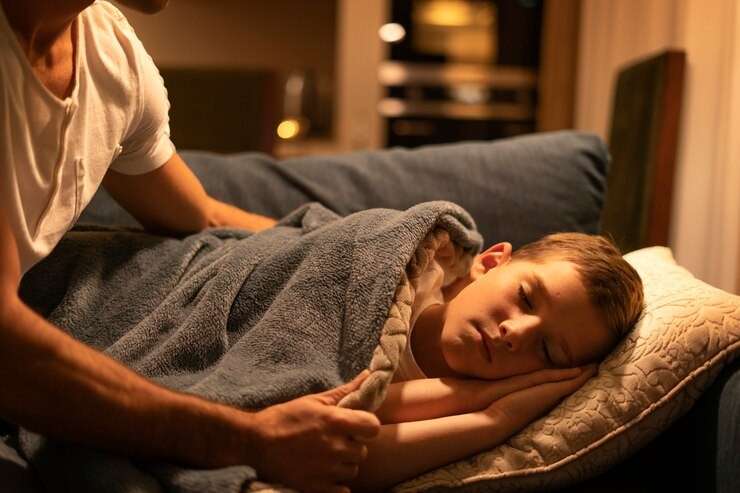Sleep apnea is a major health issue that can potentially impact children as much as adults. If you wish to safeguard your child, you must be aware of the warning signs and appropriate coping techniques. In Australia, where healthcare awareness is high, early detection of sleep apnea can have major consequences. These are the finest parenting strategies for diagnosing and treating sleep apnea in children.
Understanding Sleep Apnea
Sleep apnea is characterised by breathing pauses while you’re asleep. The types of this condition can range anywhere from a few seconds to several minutes and might happen several times in an hour. Numerous health issues and poor sleep quality are frequently caused by this interruption.
Common Symptoms
It can be difficult to diagnose sleep apnea in children because the symptoms are frequently different from those in adults. Observe the following crucial indicators:
- Snoring:
Frequent, loud snoring is a typical sign.
- Bedwetting:
If older kids begin to pee on the bed again, it could be a sign of disturbed sleep.
- Pausing to Breathe:
One important clue is to watch for breathing pauses in your child as they go to sleep.
- Uneasy Sleep:
Unusual sleeping positions or a lot of tossing and turning could be signs of sleep apnea.
- Behavioural Problems:
Insufficient sleep can cause irritability, hyperactivity, and trouble focusing.
- During the day:
Even when they sleep through the entire night, kids with sleep apnea frequently experience extreme daytime sleepiness.
Risk Factors
Several factors can increase the risk of sleep apnea in children, including:
- Enlarged Tonsils or Adenoids:
These can block the airway.
- Obesity:
Excess weight can contribute to airway obstruction.
- Certain Medical Conditions:
Conditions such as Down syndrome and cerebral palsy are linked with higher rates of sleep apnea.
- Family History:
A family history of sleep apnea increases the likelihood.
- Diagnosing Sleep Apnea
See a medical expert if you think your child may have sleep apnea. Often, diagnosis entails:
- Medical Background and Physical Examination
During the physical examination, the doctor will go over your child’s medical history and pay special attention to the throat, mouth, and neck.
- Research on Sleep
The gold standard for diagnosing sleep apnea is a polysomnography or sleep study. It entails keeping an eye on your child’s sleep at a sleep centre or occasionally at home during the night.
Managing Sleep Apnea
- Lifestyle Modifications: Modest cases of sleep apnea may benefit from a lifestyle change. Among them are:
- Weight management: You can lessen symptoms by promoting a nutritious diet and frequent exercise.
- Sleep Position: Keeping the airway open while sleeping on the side is preferable to sleeping on the back.
Medical Treatments
For severe sleep apnea cases, it’s crucial to follow up on certain medical treatments, like:
- Surgery
For sleep apnea due to anatomical issues, like big tonsils or adenoids, you can go for surgery to remove any obstructive tissue.
- Dental Appliances
In specific kids, dental appliances can change the lower jaw’s or tongue’s posture for improvement in breathing problems.
- CPAP
It is the most popular and successful type of sleep apnea treatment. For keeping airways open, the CPAP machine helps in delivering a constant stream of air via a mask.
B|Y`
All these features make it a true technological marvel that’s perfect for those seeking unwavering efficiency for sleep apnea. Its portable design also provides freedom for taking sleep therapy without any conventional restrictions caused by a room-consuming, bulky CPAP machine.
Carry Comfort in Your Handbag with the World’s Lightest and Smallest CPAP
Envision having the world’s tiniest and lightest CPAP with you at all times, neatly nestled inside your purse. Stow this portable powerhouse in your purse or backpack to make sure that your size no longer prevents you from getting the good sleep you need. At just 218 gm, the Transcend Micro goes above and beyond expectations. This portable, lightweight CPAP machine is a statement and demonstration of how technology may be integrated into daily life without sacrificing sound sleep.
The Transcend CPAP machine is a breakthrough for sleep apnea machine users, especially travellers. Its lightweight construction and robust features guarantee that controlling your sleep apnea won’t interfere with your daily activities, giving you comfort and better sleep quality wherever you go.
It takes a trip to recognise and treat sleep apnea in children. By providing their kids with the appropriate information and resources, parents can improve their sleep and general health and set the foundation for a better future.

